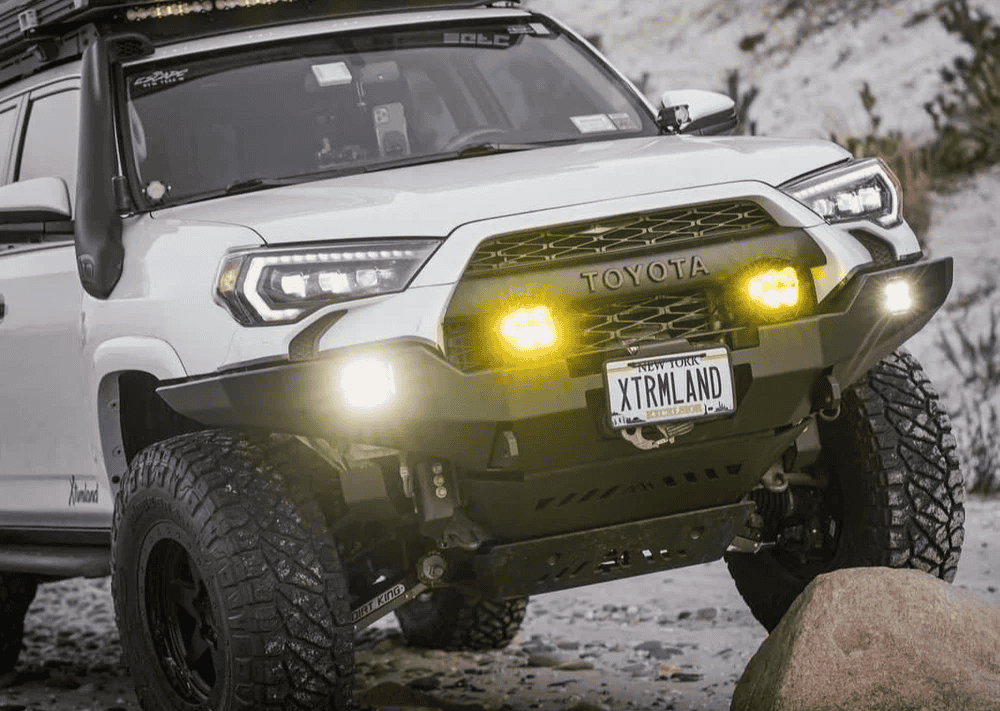Overland Vehicles

A thoughtful Toyota 4Runner overland conversion starts with a clear mission. Decide your typical trip length, terrain, passenger count, and climate. Those answers drive choices for suspension, tire size, storage, power, and water. The goal is predictable handling, simple systems, and easy daily driving when you leave the dirt.
The 4Runner’s body on frame construction, low range transfer case, and reliable V6 make a strong base. Most trims use part time four wheel drive, while the Limited adds a center differential that allows full time engagement on pavement. Stock approach and departure angles are friendly, and the aftermarket supports armor, racks, and recovery points.
Payload is the first hard limit. Many fifth generation 4Runners offer roughly 1200 pounds of payload. Subtract passengers, a full tank of fuel, and permanent gear before choosing heavy items. Keep weight low and centered to protect stability and braking. Roof loads feel bigger than they look, so reserve the roof for bulky but light items.
Navigation, communications, and recovery belong in every plan. Offline maps, a tire repair kit, a quality air source, a compact shovel, recovery boards, and rated recovery points cover most backcountry needs. Add a radio for group travel and a satellite messenger for emergencies beyond cell range.
Add up the real mass of drawers, fridge, water, armor, roof rack, tent, and tools. Weigh the truck before and after if possible. Match spring rates to the final load, not the wish list. When in doubt, choose the lighter option and pack smarter.
A mild suspension lift improves ground clearance without ruining manners. Around two inches of height paired with shocks that handle washboard is a sweet spot. Upper control arms help restore alignment and caster on lifted trucks, improving straight line stability and tire wear.
Thirty three inch tires are common on a 4Runner and can fit with careful wheel specs and minor trimming. Expect a small hit to acceleration and braking. Choose an all terrain tread for mixed travel and consider E load only if your final weight demands it. Keep a full size spare that matches diameter and load rating.
Armor should be strategic. Skid plates protect the front, engine, and transfer case from unexpected ledges. Rock sliders save doors and sills, and they make a sturdy jacking point. Bumpers add protection and recovery options but watch the scale. Lighter aluminum or hybrid designs help keep the nose from feeling heavy.
After a lift, target increased positive caster to stabilize highway tracking. Quality upper control arms can help the shop achieve specs that reduce wander. Recheck torque and alignment after the first few trips as components settle.
Efficient power keeps the fridge cold and devices charged without constant idling. A compact lithium battery with a DC to DC charger can support a fridge, lights, and small electronics. Many travelers succeed with a portable power station for modularity and easy removal when not traveling. Use dedicated fused circuits and clean routing to avoid troubleshooting in the field.
Water is heavy. One gallon weighs a little over eight pounds. In a 4Runner, four to ten gallons is a practical range for solo or pair travel. Soft containers or low mounted tanks preserve cargo space and center of gravity. Pair water with a simple filtration method to refill on the route when possible.
Storage should secure gear while preserving visibility and access. A low drawer system keeps tools and kitchen items organized. A sleeping platform can work for shorter hikers and solo travelers, while families may prefer a ground tent for space. Roof racks carry awnings, traction boards, and light but bulky items. Always confirm dynamic and static load ratings and use proper tie downs.
List every load with amps and hours of use. That simple math guides battery size and charging. Keep wiring labeled and protected. Add a volt meter so you can see system health at a glance.
Now, if all of this sounds like a puzzle, that is because every build is a set of tradeoffs. A measured plan prevents the common spiral of adding weight to solve problems that weight created. Start simple, test on a weekend loop, and adjust with real data from your trips.
For drivers who want a professional path from day one, OZK Customs builds practical, quiet, and field serviceable overland setups tailored to the 4Runner. Our team in Fayetteville, Arkansas focuses on suspension tuning, armor that fits the mission, clean electrical, and smart storage that respects payload. Explore our Overland rigs, see options for a Custom overland upfit, and learn what sets our process apart at Why choose OZK Customs. When you are ready, we will map your routes, gear list, and weight goals into a build that drives as well as it camps.
Pack dense calories and quick cook meals to conserve water and fuel. Store a separate emergency water reserve you do not touch unless plans change.
At OZK Customs, we do not rent vehicles or sell kits. We design and install complete or partial upfits for adventure travel across platforms, including the 4Runner. If your next trip runs through the Ozarks, stop by our shop and Adventure Point lounge to dial in your setup before you head for the trail.
Ready to turn your 4Runner into a dependable travel partner? Tell us how you explore, and OZK Customs will blueprint a balanced overland upfit that rides well, carries what you need, and stays within safe payload. Start your build plan now.
ADDRESS:
6159 E Huntsville Rd, Fayetteville, AR 72701
PHONE:
(479) 326-9200
EMAIL:
info@ozkvans.com